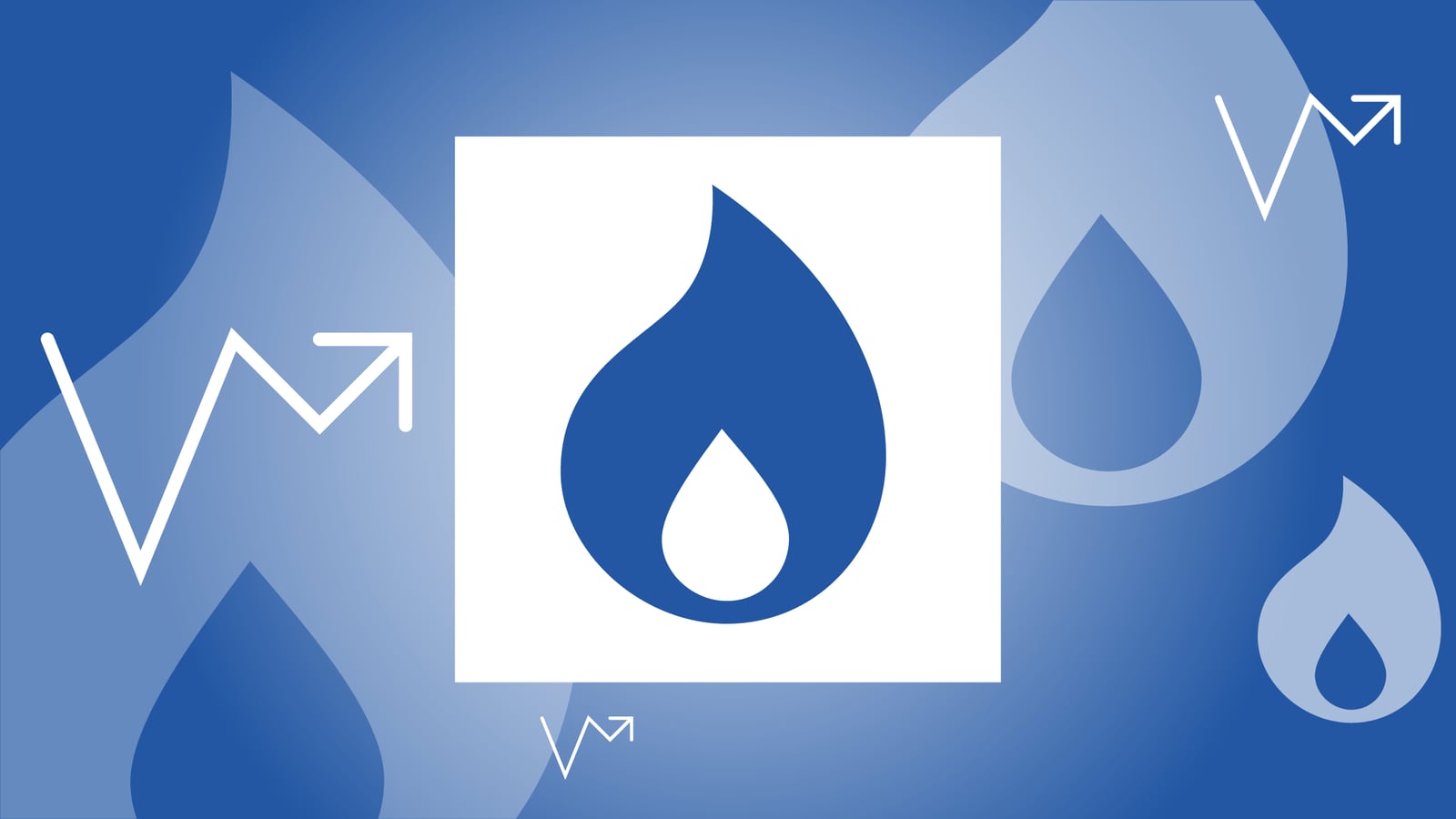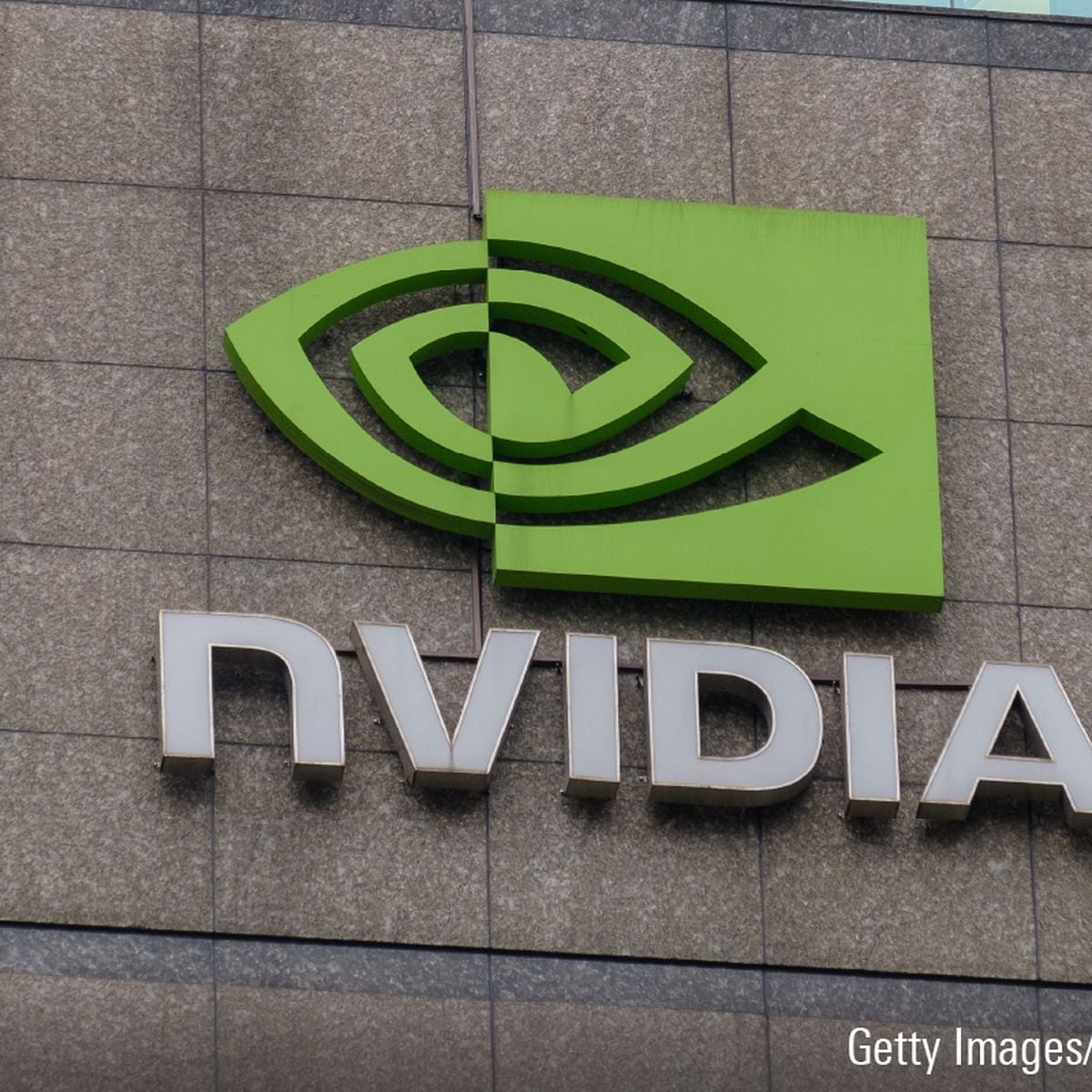Best U.S. Energy Stocks to Buy
These 7 undervalued energy stocks look attractive today.

Energy stocks had a rough time in 2023 largely because of the fall in oil prices. The Morningstar US Energy Index was down by 0.55% last year, while the broad-based Morningstar US Market Index was up by 26.44%. Energy stocks continue to lag the broad index in 2024, too.
However, oil prices have been going up this year, and investors might be interested in adding some energy stocks to their portfolio: The U.S. energy stocks that Morningstar covers, as a group, are almost 12% undervalued relative to our fair value estimates.
7 Best U.S. Energy Stocks to Buy
These energy stocks all have carved out economic moats and look undervalued, earning Morningstar Ratings of 4 or higher as of Jan. 23, 2024.
- Devon Energy DVN
- Equitrans Midstream ETRN
- Hess HES
- Exxon Mobil XOM
- Pioneer Natural Resources PXD
- EOG Resources EOG
- Kinder Morgan KMI
Here’s a little more about each of the best energy stocks to buy, including commentary from the Morningstar analysts who cover them. All data is as of Jan. 23, 2024.
Devon Energy
- Morningstar Price/Fair Value: 0.69
- Morningstar Uncertainty Rating: High
- Morningstar Economic Moat Rating: Narrow
- Forward Dividend Yield: 6.95%
- Industry: Oil & Gas E&P
The most undervalued stock on our list of best energy stocks to buy is Devon Energy. Devon Energy stock is currently trading 31% below our fair value estimate of $60.00.
Devon Energy is an oil and gas producer based in Oklahoma. It has assets in several shale basins across the United States, including the Delaware Basin, Eagle Ford Shale, STACK, and Powder River Basin. Management has reshuffled the portfolio in the last few years, divesting its Canadian oil sands business and exiting the Barnett Shale natural gas play. In January 2021, it combined with another Oklahoma-based shale firm, WPX Energy, in a "merger of equals" that significantly expanded Devon's Delaware Basin exposure and added a small position in the core of the Bakken Shale fairway in North Dakota. The merger brought economies of scale and more efficient field operations, and enhanced the competitiveness of the combined firm.
How fast firmwide production grows will depend on the trajectory of commodity prices to an extent. But management has pledged to keep growth at 5% or less, even during upcycles (though 2023 guidance implies 7% expansion over 2022). And it intends to spend no more than 70%-80% of cash flows under any circumstances, which means any windfall during periods of higher commodity prices will be returned to shareholders rather than plowed back into new drilling. The firm was the first U.S. exploration and production company to implement a variable dividend to funnel excess cash to shareholders, and the strategy was warmly received by the market when it came into effect in 2021 (when Devon was the top performer in the S&P 500). After 50% of free cash has been distributed in cash, the remainder will fund buybacks and strengthen the balance sheet. We prefer cash returns during upcycles, when firms are more flush with cash but also when stock prices are typically higher.
Equitrans Midstream
- Morningstar Price/Fair Value: 0.71
- Morningstar Uncertainty Rating: High
- Morningstar Economic Moat Rating: Narrow
- Forward Dividend Yield: 5.66%
- Industry: Oil & Gas Midstream
Equitrans Midstream is involved in the pipeline transportation of natural gas liquid and natural gas. Equitrans Midstream stock earned a spot on our list of the best energy stocks to buy thanks to its narrow economic moat rating and being 29% undervalued relative to our fair value estimate of $15.00.
After a multiyear battle with the courts and concerned stakeholders that had effectively blocked the Mountain Valley Pipeline, the Biden administration finally stepped in to save it. With legislation declaring the pipeline in the national interest and ordering the relevant agencies to issue the required permits by late June 2023, Equitrans now expects the pipeline to be in service in the first quarter of 2024. Equitrans expects to own 48.8% of the pipeline via a subsidiary as part of a joint venture and will be the operator once it is in service.
With its MVP plans finally panning out for Equitrans, we would expect its initial focus to be on reducing leverage and smaller projects like the Ohio Valley Connector (a $160 million effort). We think future large projects similar in size to the MVP are not likely, but modest incremental expansions can provide some growth going forward. With the MVP derisked, it's also possible that a larger gas-focused firm like Kinder Morgan or Williams may acquire Equitrans, as the incremental network expansion opportunities could prove highly compelling.
Hess
- Morningstar Price/Fair Value: 0.78
- Morningstar Uncertainty Rating: High
- Morningstar Economic Moat Rating: Narrow
- Forward Dividend Yield: 1.27%
- Industry: Oil & Gas E&P
Chevron announced plans during the fourth quarter of 2023 to acquire Hess in an all-stock transaction. Hess stock is currently trading at 22% below our fair value estimate of $176.00.
Hess' track record for efficiently allocating capital and generating value has been steadily improving. The company has deftly streamlined its portfolio by jettisoning less competitive and riskier positions in Equatorial Guinea, the Danish North Sea, and Libya, and by shifting the focus to more-lucrative oil and gas assets. Today the firm has two major growth assets: its 30% working interest in the Exxon-operated Stabroek block in offshore Guyana, and its acreage in the Bakken Shale play, which is U.S. onshore. Cash flows from its legacy operations in the U.S. Gulf of Mexico and Southeast Asia support Hess' ongoing investment in these regions.
The firm's Guyana assets will be an engine for rapid growth in the next few years, differentiating Hess from other independent upstream firms. This asset is a large reason why it is being acquired by Chevron. Slow and steady expansion has become the industry norm, with excess cash being funneled back to shareholders instead of plowed back into the ground. Hess still aims to distribute 75% of its free cash, but heavy upfront spending in Guyana is reducing that cash flow, although it still makes sense given the region's exceptional economics and the size of the prize in the ground. The block's gross recoverable resources are a moving target while exploration continues, but the latest estimate is over 11 billion barrels of oil equivalent. For Hess, that translates to an array of large projects. Recent guidance indicates six phases of development all online by 2027, culminating in gross volumes over 1.2 mmb/d. This includes two phases that have already been sanctioned and two that are currently producing. Even that feels conservative, with over 30 discoveries to date. We model 10 phases.
Hess is also one of the largest producers in the Bakken Shale. This includes a large portion in the highly productive area near the Mountrail-McKenzie county line in North Dakota. Management intends to develop this asset with a four-rig program that will optimize the usage of its infrastructure and expects production to reach 200 mboe/d in 2025, then plateau near that level for almost a decade.
Exxon Mobil
- Morningstar Price/Fair Value: 0.80
- Morningstar Uncertainty Rating: High
- Morningstar Economic Moat Rating: Narrow
- Forward Dividend Yield: 3.88%
- Industry: Oil & Gas Integrated
Exxon Mobil is one of the world's largest publicly traded oil and gas companies; Exxon announced during the third quarter of 2023 plans to buy Pioneer Natural Resources in an all-stock transaction. Exxon Mobil stock is currently 20% undervalued relative to our fair value estimate of $123.00.
While many of its peers are diverting investment to renewables to achieve long-term carbon-intensity reduction targets, Exxon Mobil remains committed to oil and gas. It has responded to calls to bring in more outside voices to its board and announced emission-reduction targets. It's also investing in low-carbon technologies, but these efforts are measured and keep oil and gas production at the core. While this strategy is unlikely to win praise from environmentally oriented investors, we think it's more likely to be more successful and probably holds less risk.
The end of oil is likely to occur, but not anytime soon. Gas is likely to have an even longer life due to the relative attractiveness of its emissions intensity and the need to supplement intermittent renewable power. These trends and growing demand for chemicals are what drive Exxon's investment strategy and will likely deliver superior returns.
Exxon's downstream and chemical segments have suffered from decade-low industry margins in the past, but market conditions are reverting to or surpassing midcycle levels, boosting near-term earnings. Investments are focused on producing higher-value lubricants and diesel in its downstream segment and performance products in its chemical segment, which should lift midcycle returns and earnings capacity.
Pioneer Natural Resources
- Morningstar Price/Fair Value: 0.80
- Morningstar Uncertainty Rating: Medium
- Morningstar Economic Moat Rating: Narrow
- Forward Dividend Yield: 6.37%
- Industry: Oil & Gas E&P
Exxon Mobil plans to acquire Pioneer Natural Resources in an all-stock deal that expects to close this year. Pioneer Natural Resources is trading 20% below our fair value estimate of $274.00.
Pioneer is one of the largest Permian Basin oil and gas producers overall, and is the largest pure play. It has about 800,000 net acres in the play, all of which located on the Midland Basin side where it believes it can get the best returns. The firm acquired the bulk of its acreage well before the shale revolution began, with an average acquisition cost of around $500 per acre. That's a fraction of what most of its peers shelled out during the land grab at the beginning of the Permian boom, giving the firm a unique advantage. Most of this acreage is located in the core of the play, where well performance is typically strongest. That gives Pioneer an extensive runway of low-cost drilling opportunities primarily targeting the Wolfcamp A, Wolfcamp B, and Spraberry reservoirs.
Pioneer has expanded fairly rapidly, averaging 10%-15% annual production growth over the last decade or so. Shareholder distributions remain the priority, however. The current plan calls for 5% annual growth maximum while reinvesting much less than 100% of operating cash flows (a remarkable achievement for a company in the oft-demonized shale industry, which historically relied on capital markets to support its profligacy and is commonly expected to keep destroying value). The remaining surplus will be used to preserve Pioneer's impressive balance sheet, and to return cash to shareholders. The fixed portion of Pioneer's dividend typically yields 2%-3%, and management aims to return 75% of quarterly free cash back to shareholders. The latest version of its capital return framework gives management the discretion to choose between cash or buybacks for the supplementary payout.
EOG Resources
- Morningstar Price/Fair Value: 0.84
- Morningstar Uncertainty Rating: Medium
- Morningstar Economic Moat Rating: Narrow
- Forward Dividend Yield: 3.30%
- Industry: Oil & Gas E&P
EOG Resources stock is 16% undervalued relative to our fair value estimate of $132.00. The company's Morningstar Uncertainty Rating of Medium means that the stock requires a lower margin of safety to be considered a buy than other names on the list with High Uncertainty Ratings.
EOG is one of the largest independent oil and gas producers. Most of its production comes from U.S. shale fields, with a small contribution from Trinidad. The firm differentiates itself by finding prospective areas before peers catch on, enabling it to secure leasehold at attractive rates, rather than overpaying for land after the market overheats. It has only one large-scale M&A deal under its belt, related to its 2016 entry to the Permian Basin. Nevertheless, the firm is also active in most other name-brand shale plays, including the Bakken and Eagle Ford. Additionally, the focus now includes the Powder River Basin and a new natural gas play in southern Texas called Dorado.
Because of its size and wide focus, EOG has significantly more shale wells under its belt than most peers. This has enabled it to advance more quickly up the learning curve in each play. As a result, initial production rates from new wells are usually well above industry averages (though subsequent declines are usually steeper as well—EOG isn't necessarily producing more oil from each well but is recovering the available volumes more quickly, boosting profitability). Its scale enables it to outsource less and gives it more bargaining power with suppliers, which is particularly helpful during periods of high inflation.
Kinder Morgan
- Morningstar Price/Fair Value: 0.85
- Morningstar Uncertainty Rating: Medium
- Morningstar Economic Moat Rating: Narrow
- Forward Dividend Yield: 6.62%
- Industry: Oil & Gas Midstream
Kinder Morgan rounds out our list of the best energy stocks to buy. Unlike some of its peers, Kinder Morgan is employing its excess free cash flows in the pursuit of more clean energy investments. Kinder Morgan is currently trading 15% below our fair value estimate of US$20.00.
Kinder Morgan's assets span natural gas, natural gas liquids, oil, and liquefied natural gas. The company's U.S. gas pipeline business is particularly impressive. Management claims its daily gas transportation capacity is equivalent to 40% of average U.S. gas consumption and it handles 50% of the LNG market. Kinder serves most major U.S. gas supply and demand regions.
With ample excess free cash flows, Kinder is pursuing more clean energy investments. It already considers more than 80% of its backlog to be low-carbon investments, and it has formed an energy transitions group to pursue investments in renewable natural gas, biofuels, and carbon capture projects. The Kinetrex deal added several renewable natural gas projects at a highly attractive multiple in 2021, and it built on this success with the Mas CanAm and North American Natural Resources and related companies deals in 2022. Given Kinder's extensive experience with CO2 pipelines and processing facilities, we think it is better positioned than most U.S. peers to evaluate and invest in carbon capture and storage opportunities across its footprint, as well. Methane reduction is another opportunity, and Kinder has been working on this area since 2014 via its ONE Future efforts.





/author-service-images-prod-us-east-1.publishing.aws.arc.pub/morningstar/3a7dacf1-9a98-4f04-9253-c1959dbdd88a.jpg)